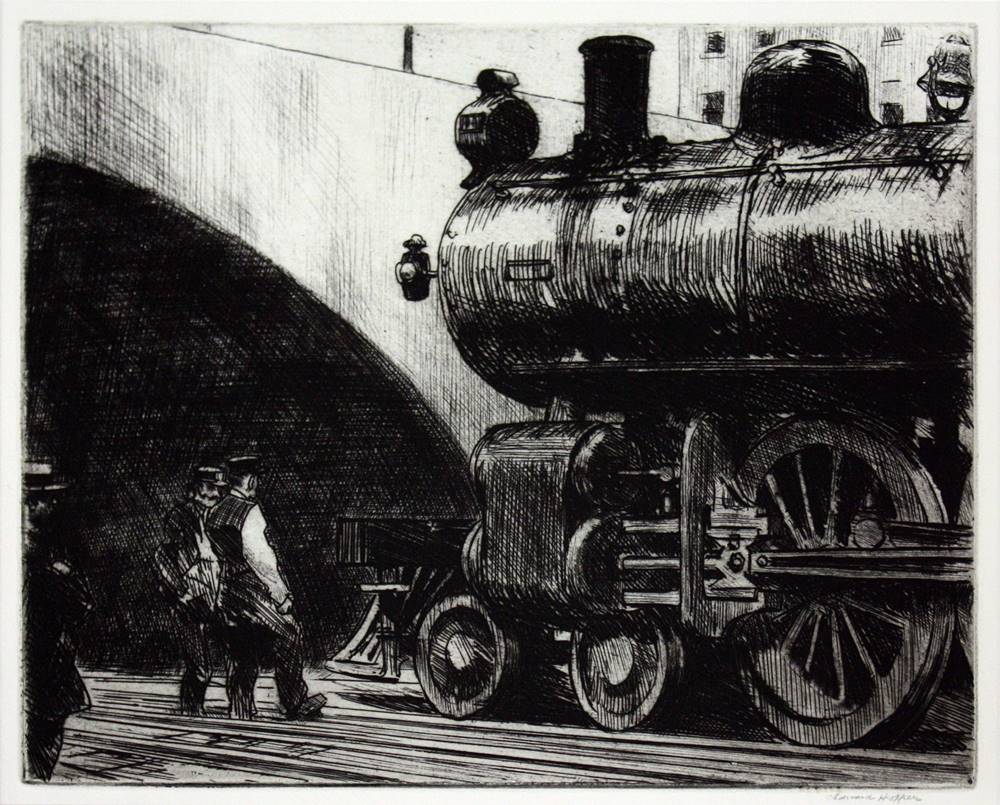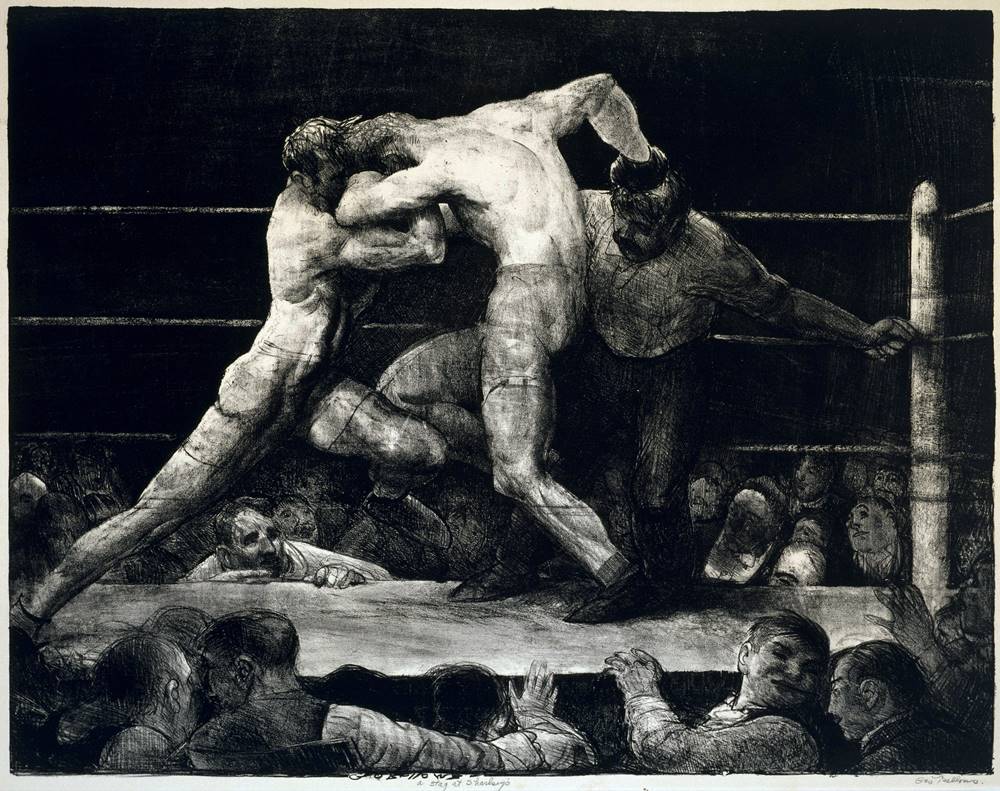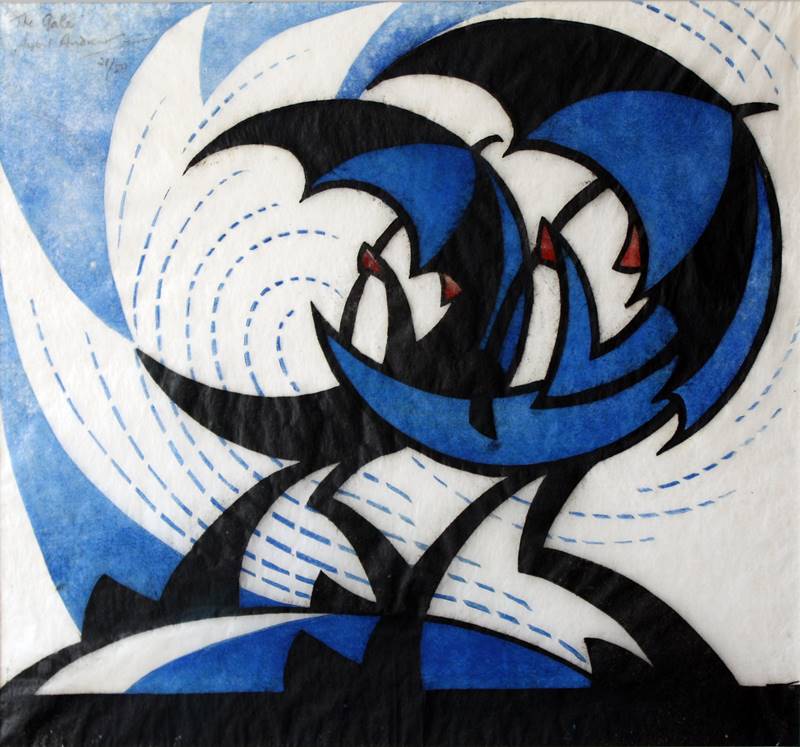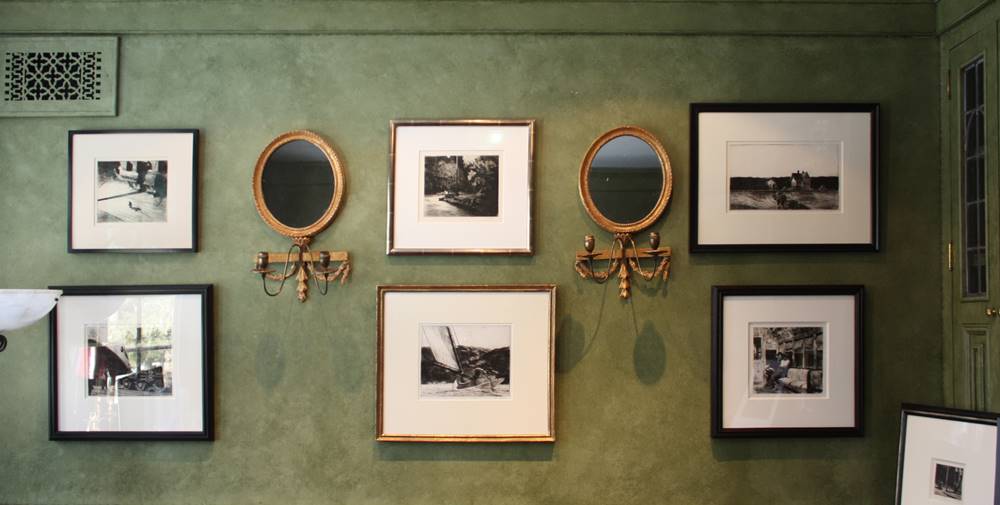Analysis
artnet Auctions: On the Hunt With ‘Mad Men’ Collector John P. McGarry Jr.
What seemed like admiration for an era grew into a lifelong passion.

Image: Courtesy artnet.
What seemed like admiration for an era grew into a lifelong passion.

Conner Williams

Two days after Hurricane Sandy hit the Eastern Seaboard in 2012, Christie’s held their semi-annual prints and multiples sale, which was delayed due to the ravaging storm. I was a specialist at that auction house at the time and was running around more than usual, easing the minds of consignors and preparing the salesroom. At the time, the owner of Sybil Andrews’s rare and colorful linocut Sails (estimate $7,000–10,000) was considering withdrawing it from the auction, which was alarming, since it was one of the first lots on the block that morning. Average lots in prints sales are around $20,000, so it wouldn’t have been a huge loss, but in securing interest from the two largest collectors of Grosvenor School linocuts, it would have been disappointing if we had not seen a moment of heated bidding that morning.
Luckily, the owner of Sails didn’t withdraw. I jumped on the phone with advertising executive and avid print collector John P. McGarry Jr. and his assistant moments before the lot opened. Bidding quickly hit $15,000, $20,000, $30,000. I kept my hand raised for the auctioneer, indicating that we were bidding. McGarry wasn’t going to lose, and he didn’t. The lot closed at nearly ten times the estimate.
In the past few years, McGarry has quietly put together one of the most impressive collections of inner-war British and American prints, including rare and extraordinary etchings by Edward Hopper and perhaps the most complete collection of Grosvenor School linocuts, rivaled by few private collectors and institutions in the world. His collection of Christopher R.W. Nevinson lithographs and impossible-to-find mezzotints alone would make any collector feel envious.

Edward Hopper, Locomotive.
Image: Courtesy artnet.
McGarry began his advertising days in the mid-1960s basement of Young and Rubicam, preparing invoices for their client, Frito o’ Lay. It was here that he met his wife Gilda Spurio and established a meaningful career and legacy as one of the most formidable advertising men of Madison Avenue, forging strong relationships through client loyalty, an unshakeable determination to win a pitch, and lasting creative work. As one former colleague said, “John loved the thrill of pitching to a client, and there was no one more passionate than him.”
He eventually became the firm’s president, with famous campaigns managed and born under his tenure, including ones for Kentucky Fried Chicken, AT&T, and Kraft, and Dr. Pepper’s “I’m a Pepper.” Y&R eventually went public in 1998, and afterward McGarry decided to build his own agency from the ground up, teaming up with two other advertising executives to start a firm. With the same “gracious and tenacious” approach—the moniker given to him by a client—McGarry’s firm was named agency of year in 2009 and again in 2011.

George Bellows, A Stag at Sharkey’s.
Image: Courtesy artnet.
It was around the time of Y&R’s public offering that McGarry began to collect. In 1998, he acquired George Bellows’s most important and largest boxing lithograph, A Stag at Sharkey’s, from the Hirschl and Adler gallery—it still hangs in his study today. A few years later, while in London on business, he walked into a gallery, then run by Gordon Samuel, and walked out with a handful of Grosvenor School linocuts under his arm. Sybil Andrews’s Football, purchased for £8,500, was among his first prints from the school and certainly not his last. What seemed like a simple admiration for this era and school of art grew into a lifelong passion for the hunt for the rarest of them all.
Over the last 15 years, McGarry has amassed nearly the entire body of linocuts by the two greatest Grosvenor School proponents, Cyril Power and Sybil Andrews, as well as founder Claude Flight and students Lill Tschudi, Ursula Fookles, and Ethel Spowers, among others. Linocutting was taught by Flight in the 1920s and ’30s at the house in Pimlico, London, where students used linoleum, tissue paper, and colored inks to produce some of the most dynamic and timeless images of the era. These include Power’s Tube Station, Andrews’s The Eight, and Flight’s Brooklands, which are among the artist’s most sought-after works, each regularly achieving around $100,000 at auction. These were the first pillars in his extensive collection.

Sybil Andrews, The Gale.
Image: Courtesy artnet.
McGarry has also acquired rare experimental proofs and editions, some released in various parts of the world. He owns three impressions of Power’s Tennis, one from the regular edition of 60, and two color-variant proofs; McGarry spent several years trying to track down just one example of this print. More recently, he has added an experimental proof, printed in a brilliant emerald green, spectrum red, and permanent blue, of Speed Trial by Power to accompany the example from the regular edition.
Interestingly enough, McGarry has also shown a keen interest in some Grosvenor School prints released in separate countries; he owns three impressions of Andrews’s Steeplechasing—from the US, Australia, and an original edition (first printed in the UK), dating from 1930–36. While visiting with McGarry at his Bedford Hills home most recently, he recalled his giddy enjoyment, not just for the Grosvenor School linocuts, but the chase. “I love the hunt,” he explained, as it’s become an obsession for him in his retired years. In some ways, it’s similar to his love of advertising, and though he has since retired, he still remains involved in the business and can’t quite leave it behind.

John McGarry Jr.
Image: Courtesy John McGarry Jr.
The linocuts have been McGarry’s main pursuit in developing a world class collection of Modern prints, but he also holds a strong group of works by two of the greatest artists of the intaglio process: Edward Hopper and Christopher R.W. Nevinsion. Hopper’s The Lonely House and Summer Twilight stand out as two of the rarest prints in the collection—few have rarely come to auction, and very few institutions have impressions of these in their permanent collection, the Philadelphia Museum of Art and the Whitney Museum of American Art notwithstanding. Not dissimilar are Nevinson’s mezzotints of the industrial and city environs of New York and Britain, so perfectly inked and rendered that you must study these carefully in person to truly appreciate their technical bravura. The edition size of these, like many Hopper prints, is unknown and presumed to be very small.

Study in McGarry Jr’s Upstate NY home.
Image: Courtesy artnet.
In building the collection over the years, John McGarry has collaborated with many dealers, advisors and auction house specialists. The same “gracious and tenacious” descriptor that has followed him as pioneering advertising executive has characterized these relationships, too, filled with kind words of gratitude and praise, many of which are always underscored by the dogged desire to finish the hunt and find that one work. On a personal note, it’s been fun, exciting and an honor to play such a small part in the collection—a role and friendship that has been less about business and always about the art.
Portions of John P. McGarry, Jr.’s collection will be on view at artnet’s New York location through the end of our Modern Masters auction from February 10-18, 2016.
Conner Williams is a Senior Specialist of Prints & Multiples at artnet Auctions & Private Sales. You can reach him at [email protected].